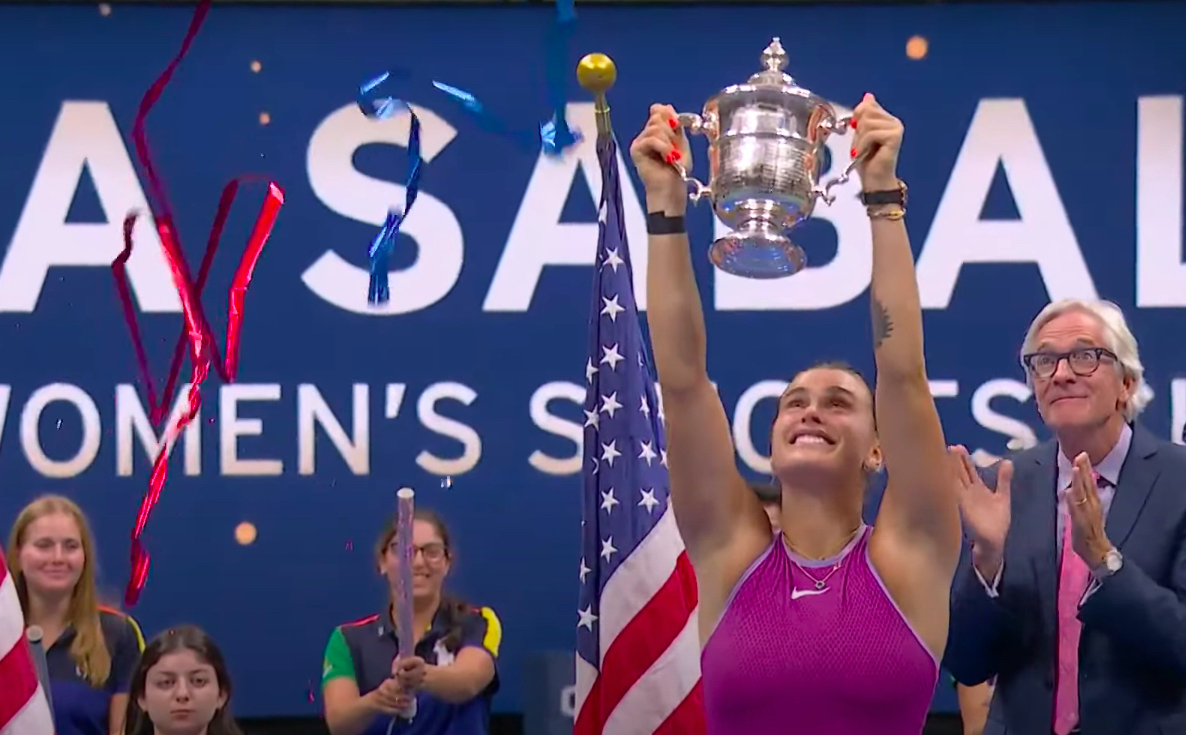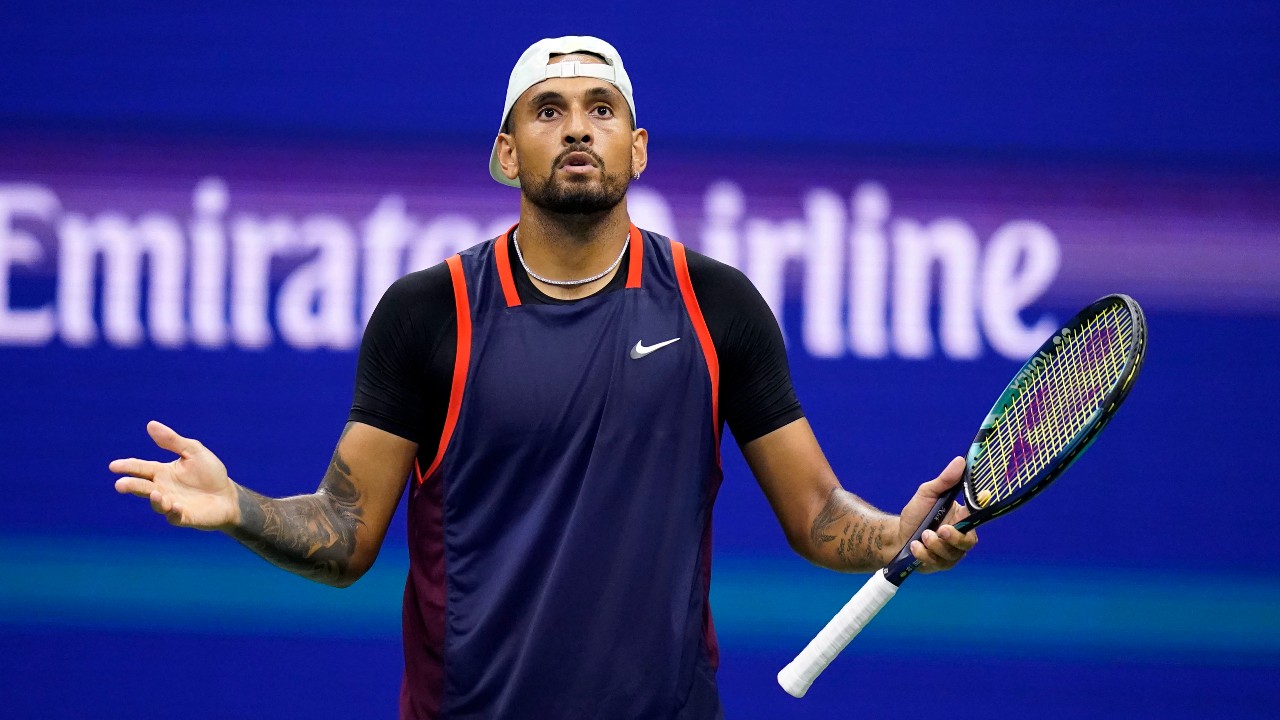Aryna Sabalenka Conquers The U.S. Open At Last | Defector

Perhaps no pairing of tennis player and major title felt as inevitable as Aryna Sabalenka and the U.S. Open. This was one of the hardest-hitting players in the sport’s history, a smiley enforcer with a style so imposing that it can render opponents almost extraneous to the match. The result hinged on whether or not Sabalenka could keep those cartoonishly powerful groundstrokes inside the lines, because nobody’s returning them.
Sabalenka delivered proof of concept by winning her first majors on the hard courts of the Australian Open in 2023 and 2024, in her usual booming fashion. All the while, New York delivered disappointment, most acutely in the 2023 final, a collapse that left her coolly puréeing her racquet and tossing it in the garbage can. But the No. 2 seed found that elusive joy Saturday night, winning a fascinating final against No. 6 Jessica Pegula, 7-5, 7-5, to claim her third major title.
Those who have closely followed the career of the 26-year-old Belarusian will be familiar with all the dicey parts: the howls of frustration, the staggering double-fault numbers during her service yips, the occasional self-sabotage by shot selection, the lingering matchup issues with best-in-class Iga Swiatek. Sabalenka addressed each of those woes in time, and somehow the player most synonymous with unreliable, brazen power has transformed herself into the most consistent big-match player in women’s tennis. She’s reached the semifinal stage or better in seven of the last eight Grand Slam tournaments she’s played. It’s the culmination of so many small savvy choices, whether that’s enlisting a biomechanics specialist to fix her ailing serve, mixing in more shot variety to complement the raw pace, or committing herself to conditioning to keep up with Swiatek.
Watching Sabalenka in Thursday’s semifinal against Emma Navarro was a clear mark of her improvement. Navarro, the fast-rising No. 13 seed who’s beaten Gauff in the past two majors, came in with a smart plan, executed it capably, and was still pulverized on the scoreboard. Previous Open semifinals have been nervy affairs for Sabalenka, but this was like watching an organism higher on the food chain happily chow down on an inferior. Part of me expected to see that same dynamic in Saturday’s final, which pitted Sabalenka against Pegula, another counterpuncher with a potentially vulnerable serve. Last month in the Cincinnati Open final, Pegula’s game wasn’t nearly enough to shake her opponent out of her form through that tournament. Here in New York was another untouchable Sabalenka, who had faced a minute of peril all tournament; I could already hear the crunchy second serve returns off Sabalenka’s racquet.
In reality, Pegula turned out to be a far more interesting opponent than the Cincinnati final would have suggested. In the second week of this U.S. Open, the 30-year-old has drawn on her tactical sense and sheer resolve to upset Swiatek, spring back from the cusp of defeat to take out Karolina Muchova, and complicate the plot for the eventual champion. It was a rough outing for Pegula, who was heard complaining to her box about a lack of feel in her racquets, possibly due to the strange conditions: closed roof, big storm, high humidity. Despite those struggles, down 0-3 in the second set, she abruptly ripped off five straight games. Pegula improved her serving, found ways to redirect Sabalenka’s pace, and threatened to level the match at one set apiece.
It was only then that Sabalenka strung together a four-game run of her own, punctuated by some eyebrow-searing winners, to secure the title. While she deserves credit for the sound volleys and short slices she mixed in, this was a match won with her bread-and-butter free-swinging shots. One stat that circulated earlier in the tournament indicated that Sabalenka had the highest average speed on the topspin forehand, higher than top men’s players Jannik Sinner and Carlos Alcaraz, and it was that kind of power that returned at the end of the second set.
“That’s the only way it works for me, because every time I’m trying to play safer and play, like, be aware of these key moments, every time I stop my arms and the ball flies in the stands,” Sabalenka said afterward in press. “So [a] long time ago, I decided for myself in that those important moments I just have to go for it, I have to swing.”
Although Sabalenka holds two major titles this year, Swiatek still sits ahead of her in the rankings, which is a testament to how consistent the world No. 1 has been every week on tour. But Sabalenka has now emerged as the player to beat in the biggest tournaments. While Swiatek holds the 8-4 edge in their head-to-head, any meeting between these two is already an occasion; the Madrid final was one of the best matches of the season. Sabalenka’s U.S. Open title just underscores what became clear over this summer: These are the two best players on the WTA by a considerable margin, and their rivalry may well define the current era.
Related
Cameron Norrie advances at Indian Wells but top seed Alexander…
Great Britain's Cameron Norrie fought from a set down to reach the third round at Indian Wells but top seed Alexander Zverev was d
Tommy’s Time: All-Court American Seeks Next Milestone
His coach Brad Stine says that these types of big goals are what keeps the New Jersey native motivated. “There are still a lot of things within the sport tha
Nick Kyrgios acknowledges uncertain future after retirement from match with…
The latest setback for Nick Kyrgios has the Australian tennis player wondering aloud about his future. A nagging wrist injury forced an emotional Kyrgios to r
Former Indian Wells champion says she is ‘very sorry’ as…
The 2025 Indian Wells tournament is well underway as the stars of the WTA Tour search for success in the Californian desert.Several top stars will believe they












